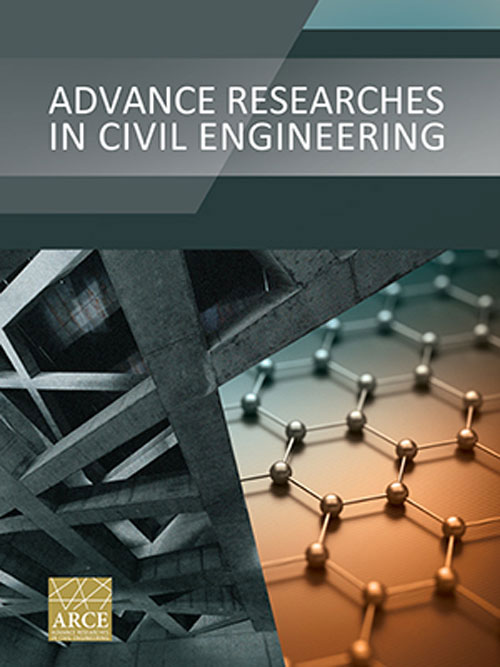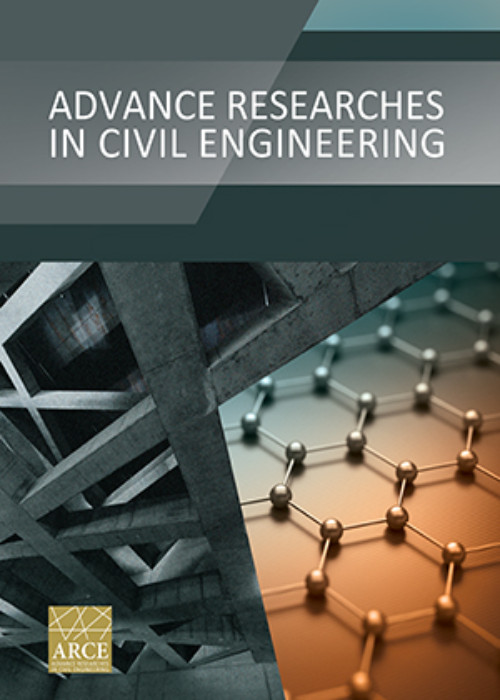فهرست مطالب

Advance Researches in Civil Engineering
Volume:3 Issue: 3, Summer 2021
- تاریخ انتشار: 1400/08/23
- تعداد عناوین: 5
-
Pages 1-20
In a construction project, it generally takes a long time and is complex in nature, giving rise to uncertainty which in turn leads to risks. The impact of risk can affect the cost, quality and timing of project implementation. At each stage of the project, various risks and uncertainties are inseparable. To reduce the adverse impact on the achievement of the functional objectives of a construction project, it is necessary to carry out a risk assessment. Risk is a logical combination of probability and impact and it is necessary to use fuzzy logic to model the inaccuracy and uncertainty of human thinking. This study aims to compare the results of Risk Assessment with the Fuzzy Analytical Hierarchy Process (F-AHP) method against the risk variables identified in the Risk Management Project. From 30 journals reviewed, it shows that technical risk is the biggest risk in a construction project.
Keywords: Risk Assessment, Risk Management, Risk Analysis, fuzzy AHP -
Pages 21-31This paper presents an application of nonlinear strut-and-tie model (NSTM) for analysis of reinforced concrete (RC) external beam-column joints under lateral loading. The conventional STM is a calculation based on the force method exhibiting the internal forces in each component, it is unable to capture an inelastic response when RC beam-column joints undergo large displacement. Test results of three external beam-column sub assemblage frames with seismic and non-seismic detail in the joint region, were used to verify the applicability of the NSTM, respectively. In the joint region, nonlinear links of concrete and steel bar were applied to simulate a load-displacement response. The results, such as maximum loading capacity, lateral load-story drift relation and failure mode, obtained from both NSTM models and laboratory experiments were compared. It was found that the results from the analyses using the NSTM agreed well with the experimental results. Furthermore, the demand-to-capacity ratios of the nonlinear links, which represents the distribution of the internal force in the NSTMs’ joint region, exhibit the failure location and the failure mode that compatible with the experimental result. Hence, the proposed model is capable of predicting the strength of external beam-column joint of RC frames under lateral loading.Keywords: RC beam-column joint, Seismic Retrofitting, Prestressed joint enlargement, Strut, Tie Model, Non-seismic detailing
-
Pages 32-41In recent years, with the increase of pollution problems of cement factories and its impact on the environment, there is always a great need to achieve high-strength structural lightweight concretes using local and inexpensive materials. To be sustainable development is also done. At present, an attempt has been made to use masonry powder to improve the mechanical properties of lightweight structural concrete. For this purpose, 180 cylindrical concrete specimens in dimensions of 15 x 30 with 25 types of mixing designs, including powdered concrete concretes with different selected times were considered. The results of this study, which was performed by performing the above tests on samples made in 7-day, 28-day and 90-day time, showed that the use of masonry powder at the rate of 18% of cement weight, while reducing the weight of concrete, increased strength has been. Concrete compression was 50% if microsilica was used and its compressive strength was increased by 30% if microsilica was not used.Keywords: Concrete, Mel powder, Light weight, structure, Masonry
-
Pages 42-60This study aims to assess the effect of slit dampers on chevron braced frame in steel structures with different number of stories under one-way and cyclic loadings. To assess and compare the results, a parametric research was performed on slit, non-slit and cavity dampers. 8 single-story and single-span frames in the form of moment frame, braced frame with non-slit damper, braced frame with slit damper, braced frame with cavity damper, and chevron 3-story frame with slit damper, chevron 5-story braced frame with slit damper and the 8-story chevron braced frame with slit damper were modeled and analyzed by ABAQUS finite element software. The results showed that the chevron braced frame with slit damper dissipated a large amount of earthquake input energy and reduced the base shear force with its behavior. Hysteresis curves with stability and without high dissipation indicated high energy absorption by the chevron braced frames equipped with slit dampers. In all chevron braced frames with slit damper, no plastic hinge was formed in the structural members, and the failure mode was concentrated in the slit damper element. Slit damper reduced the initial stiffness, secondary stiffness, and bearing capacity, which in addition to controlling the lateral displacement of the structure increased energy dissipation capability and ductility. The chevron braced frame with slit damper had a better ductility than other specimens and had a good seismic performance based on the results.Keywords: Chevron braced frame, Slit damper, hysteresis curve, Ductility, Plastic hinge
-
Pages 61-75As one of the main infrastructures of the air transportation system, the air fleet has a significant effect on the operation at a reasonable cost. Deciding on the commensurate airplane to renovate the fleet falls into the multi-criteria decision-making (MCDM) problems. Airplane comparison criteria are very diverse, and no airplane is the best based on all criteria. In this study, selecting commensurate airplanes for airlines that meet domestic air transportation demand was investigated. The alternatives considered were Airbus airplanes, which were evaluated and compared based on six indices: price, maximum takeoff weight, passenger capacity, fuel capacity, the volume of passengers’ space, and volume of the cargo compartment. Also, several MCDM techniques require different levels of computational and maybe produce different outputs. The results of the different methods are not the same. To ensure consistency, accuracy and increase the reliability of the results, several methods were applied. Four different MCDM methods were used to make a comprehensive comparison, including analytic hierarchy process (AHP), simple additive weighting (SAW), and technique for order of preference by similarity to ideal solution (TOPSIS), and elimination et choice translating reality (ELECTRE). The results showed that the Airbus A318 airplane is selected as the top alternative based on these indices and using all four methods. The difference between the results of each method revealed for ranks 2-6. Based on AHP, TOPSIS and SAW, the second rank was designated to Airbus 319. However, ELECTRE had a different rank for this airplane.Keywords: AHP, Airplane selection, Electre Saw, TOPSIS


